The Monasteries: Batalha
& Alcobaco
And it rains
We barely left when it started
to rain – guess it’s good that we didn’t plan beach time or walking. At least
inside the Monasteries it should be dry. Today we will visit two of Portugal’s
most amazing monasteries (after we missed out on the one in Lisbon!!!).
Gine said Paul we are 20 Min
behind schedule, Paul said we are on vacation and Gine said No:
We
are Explorers – we are not on Vacation.
Batalha Monastery
We found free parking and it was
not totally raining, a good start – so why do we come here:
- Batalha means battle and it celebrates the medieval battlefield history which lasted only one hour
- King Joao I wanted to thank the Virgin Mary with a new church and monastery after he claimed the Portuguese crown: in 1385 he won Victory over Castille (Spain) and claimed Portugal’s independence – his descenders: the Aviz dynasty ruled Portugal until 1910
- He is also referred as “o Bom” the Good and his motto was “por bem” for good” – which is by the way inscribed in this tomb
- Some English soliders helped him in the battle and he signed a treaty with the Windsor in England – and to seal the treaty he married Phillipa of Lancaster
- The Funny part is: Joao was reluctant to marry her, as his vow of celibacy as the Grand Master of the order of the cross wouldn’t allow it: before agreeing, he retreated to a monastery first with his mistress (!!!) he married Phillipa in 1387.
- And Smart Phillipa: she banished Joao’s mistress to a distant convent, but raised her ‘bastard’ children (the Braganca line) – they did compete later for the throne
- On her deathbed with the plague Phillipa called one of her sons: Henry and made him swear he would dedicate his life to find the legendary kingdom of Prester John – and sending him on a journey to explore the unknown: he was not only the Grand Master of the Order of Christ but also known as Henry the Navigator
- As it is in a loving family: another son Fernando attacker Tangier in 1437, he got captured and his family refused to pay the ransom – he died in captivity
- I think I also should mention Huguet – the architect of this monastery, he also introduced the flamboyant gothic style to Portugal: in 1402 he took over building Batalha and worked in construction it until his death in 1438: he built the cloister, made the church over 32m high – nearly all we can see today is from him. (By the way we don’t know when he was born)
Let’s start the exploring: first
we found some cute kittys made of stone (that will be Paul’s next project). I mean this is this huge gothic building –
amazing to look at, as we walked around we found a little entrance way and went
in, even we discovered it was actually not the main entrance, so we started out
in the front of:
The Church: where there
were several little side chapels with the saints, and then you come into the
main super high church during the European age of faith:
- What’s the Age of faith: During that time the Catholic church was the most powerful organization of Western Europe: People at that time were very religious and believed that the Catholic Church represents God on earth and held all the power to send a person to heaven of to hell. Many Nobles left land for the church when they died as they hoped that this will help them to go to heaven. The Church became also the largest landowner in Western Europe. The Church was also the main center of learning and the only ones who could read and write. As the church officials were the only educated people even Rulers relied on them. There were many kingdoms – but only one Catholic church.
The Founders Chapel –
Capelo do fundador: why up in the ceiling King Joao I’s coat of armor holds the
arches in place and underneath is the sarcophagi of him and his English Queen
Philippa: what’s kind of cool they lie on the back holding hands for eternity –
even his motto “por bem” is caved on his tomb. On the outside are his children
buried: like Henry the Navigator.
The Royal Cloister –
Claustro Real: ok now this is super cool looking – with all those super cool
Manueline style arches we even discovered the cross of the Order of Christ and
the armillary sphere (the earth as the center of the universe) in them
The Chapter room: now
this is something special – first the history involved in building it but also
the soldiers who stand still like statues and guarding the tomb of the unknown
solider – and between them the crucifix. What was cool was when we were further
around the cloister we suddenly heard some commands and we went back and saw
the end part of the change of the guards – it really echoed in the arched
hallway:
- The 60ft span star vaulted ceiling is something to admire – it was quite impressive for the time it got built in, it collapsed twice during construction and because it was so dangerous to built only prisoners condemned to death were “allowed” to work on it
- The crucifix shows 3 small soldiers under an eternal flame – and it represents the 3 chapters in Portuguese military history: Fighting 1) the Moors in the 12 century – 2) the Spanish in the 14th century and 3) the Germans in the 20th Century
Military Exhibition: not
that we understood a lot – but we did find a German flag from the Admiral
Panzershiff (tank ship “Admiral Graf Spee”)
Know
the Past – Feel the Present
The Basin: when you see
it you know you are at the entrance to the Refrectaroy – which is the dining
room, it is for washing the hands – even this one had fishes in them (so we
were not so sure on how clean it is). But then the Monks often wash their hands
also for ritual and symbolic value.
The Unfinished Chapel: as
the name says it is unfinished, it was intended for tombs, once we walked in –
it is amazing to see all the details in the columns and arches – what is
missing is the ceiling!!
- Here King Duarte (he was the oldest son of King Joao I and Phillipa) and his wife watched the clouds pass, he started to built this chapel but died young of plague – his then 6-year old son Afonso V became then the new king
And it rains!! Gine said we have
to walk to the main entrance and admire the church from all sites – Paul said
it rains and he will go in the car and not look at it in the rain. he did miss the
Main entrance:
- In the middle is Jesus and the 4 Evangelists – and near the doors the 12 Apostles
- Around the archway from the inside out: are 1) Angels with wings, 2) Angels with instruments, 3) Biblical Kings, 4) Portuguese Kings (they have a globe in their hand), 5) Doctors of the church with martyrdom symbols and 6) female saints (all you need is lots of time and you kind figure it all out)
Rain – perfect for shopping
As we left in rain and then saw
a Lidl sign – we decided it is perfect timing, to do some shopping!! On the way
to the next monastery, we suddenly saw a tank sitting near the road. As we
don’t see those often, we turned to take a picture of this unique war memorial.
Alcobaco Monastery
As it temporarily stopped
pouring (no worry it started again) we decided to visit this monastery too, as
we drove into the parking lot there was an empty spot waiting for us. Once we
left, we discovered on how lucky we were, as there was a lineup of cars you
wanted to drive in, it was nearly impossible for us to go out, as they were so
eager to go in – they didn’t realize there is more space once we leave.
An even older Monastery:
- Every time you win a war you built a monastery – or so it seems to us: this one is closely linked to the birth of the nation: King Afonso I Henrique vowed to built a monastery to commemorate is victory over the Moorish stronghold: they started to built in 1147 and the first Monks arrived in 1228, they were determined to make this the most powerful abbey
- It is worth mentioning that at that time there was no town: during that time the monastery was the industrial engine they made ceramics and other products, by the 16th century the town grew around the Abbey
- The monastery was dissolved in 1834
Maybe it’s a good time to
have a look at the kings of Portugal:
- Portugal had kings from 1139 until Oct 5, 1910 when the republic of Portugal was established after the revolution
- During the 800 years of monarchy, they had 4 different royal lineages and 37 kings
- It started with Kind Alfonso I in 1139: he reconquered Portugal from the Moors and declared the independence of Portugal – they also named him the conqueror – the great and the found and the father of the Nation: and after him it was called the Alfonsine Dynasty (House of Burgundy) which lasted until 1383. The last one in Line was King Ferdinand: as he only had a daughter Isabel who married Joao I
- House of Aviz: King Joao I of Castille proclaimed king by the right of his wife and started this dynasty in 1385, his linage stopped when Joao II died without an heir
- House of Habsburg of Phillipe Dynasty: Prince Fillipe I, was the king of Spain – he proclaimed himself also the king of Portugal, even it took the Portuguese another year until in 1581 they recognized him. This lasted until 1640
- House of Braganza: Joao II claimed that he as the great great grandson of King Manuel I from the House of Aviz should be the rightful king. He was proclaimed as King Joao IV. King Manuel II was finally the last king of Portugal (remember the Braganzas were the childrens of Joao’s I mistress)
- Interestingly Portugal had some really young kings: Sebastion was the youngest and became king 5 days after his 3rd birthday in 1557, and he died at the age of 24, Afonso V was only 6 years old when he became king (he was the one who married at the age of 10!!).
- Maria II was 7 years old when she became Queen for the first time, then her uncle Miguel I took over and proclaimed himself to be the king. Once Maria was 15, she married and became a queen again, only a month later her husband died, then a year later she married a German prince.
Ok so lets’ start our tour in
the Alcobaca Monastery:
Cloister: another
beautiful courtyard –we learned that the monks prayed here, did exercise and
connected with nature (by the way later on our walk we learned you had to be
silent – no talking!!)
After coming by the Basin which
we know that you had to wash yourself before eating we entered the Dining Hall
or Refectory: I mean that hall is gigantic!! On one side some steps went
up, looks like that someone can stand there and read sacred texts during you’re
eating – no watching TV during supper.
Kitchen: was right next
door – and this is seriously not what you expect from a kitchen – 2 massive
stone tables and in the middle a huge “oven” with a gigantic venting – we read
that they could roast 7 whole oxen at the same time – guess that is what you
need when you have to have meals for 450 monks. Along the sides were sinks – they
even had running water here, they rerouted part of the river to have the
running water. By the way a staircase leads directly to the Dormitory – so you
are fast in the kitchen if you are on duty.
Monks Hall: another huge arched
hall – for a while it was an accommodation and then also served as wine cellar
(that big!!!)
Dormitory: up the stairs
and we come to the sleeping quarters – no privacy here, but view into the
kitchen – direct access also to the church: you never miss evening or morning
prayers. As we were upstairs, we walked around the cloister enjoying the nice
views on the orange trees before heading down to the:
Parlatory: this would be
Gine’s favourite room – because here the monks didn’t had to be silent, here
they could discuss matters of interests.
Chapter House: here they
talked about questions regarding the community- the monks also met here daily
to listen to the chapter of rules, and here were a lot of really important
person displayed: Saints and Angels (Someone is watching over you) From here we
did a quick side trip to the cloister and the beautiful orange trees and we got
one of the oranges for later.
Hall of the kings: now
this is one impressive room, first we looked at the blue-white tiles on the
wall, if you can read Portuguese or know the history well you can figure out
the story of the reconquest from the Moors and the building of the monastery.
Looking up you can see statues of the Portuguese kings – the last statue you
came in here was Joao who ruled when the 1755 earthquake hit, after that there
was no more money for fancy statues. And in case you wonder: if you are the
founder you will get the largest statue: King Afonso I Henrique who gets
crowned by the pope and St Bernard.
Church: another impressive and huge gothic church –
Gine thought it was very interesting to read that the population was not
allowed to enter the church until the 18th century: until then
normal people had to go to the church ‘outside of the wall’. What was the most
amazing part in this church is that end are
The tombs of Dom Pedro and
Ines: no question those are 2 remarkable sarcophagus – but I think you also
need to know the story behind it to fully understand it. Let’s hear first the
story and the look at the tombs:
- They are the most tragic & romantic couple of Portugal: King Pedro (1320-1367) and Dona Ines de Casatro (1323-1355). They rest feet to feet, so that on Judgement-day they’ll rise and immediately see one another again
- 20-year-old Pedro met 17 year old Ines on his own wedding to Ines cousin Constance – a political arranged marriage by his father. Dutiful Pedro got a son and future king with Constance in Lisbon, still seeing Ines on the side in Coimbra. When Constanza died Pedro settled with Ines. Concerned about Spanish influence, Pedro’s father Alfonso IV forbade their marriage – so they married secretly and the couple had four children. King Alfonso feared rivals to his other “legimate” grandsons kingship and had Ines murdered. Prince Pedro then staged and armed uprising in 1355 against his father with more bloodshed. Once Pedro became king in 1357, he exhumed Ines body, dressed her in a bridal gown and put her on the throne – then all his enemies had to kneel and kiss her rotten hand, he then executed her two murders himself by ripping out their hearts and eating them
Once we know the story we can
look a bit closer at the tombs – where you can see part of the story:
Pedro’s tomb: you can see angels
like alarm clocks to wake the couple on judgement day – you can read “ata ao
fim do mundo” “until the end of the world” when he and Ines will be reunited.
Below his head is the “wheel of life”: on top him as the king and at the bottom
in his tomb on the left are the good things in his life and on the right the
bad things (like her beheading). And the whole sarcophagi sits on lions the symbol
of royalty. As where Ines tomb is supported by the lowly scum who murdered her.
Behind are several small chapels
with saints – and then we came to the Pantheon: where we saw more sarcophages,
if the years are correct, they are very old like from 1220 and 1304

 Batalha Monastery, Leiria, Portugal
Batalha Monastery, Leiria, Portugal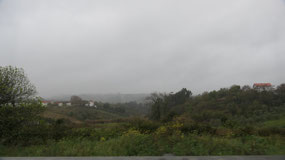
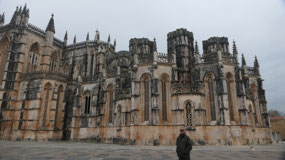
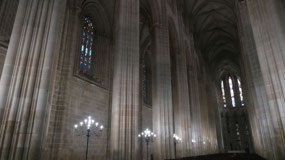
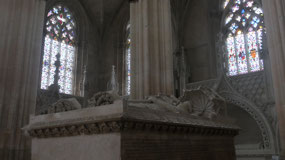
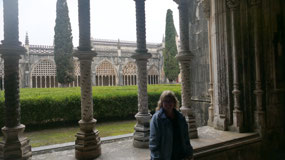
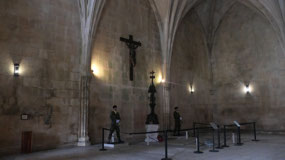
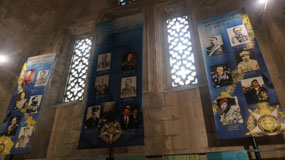
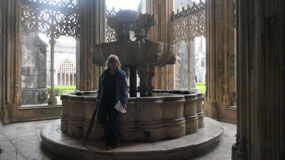
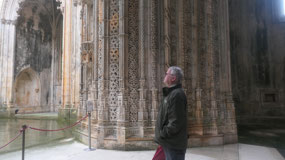
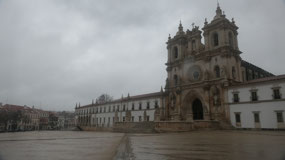
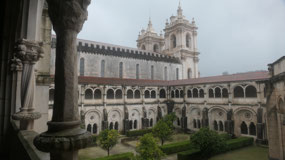
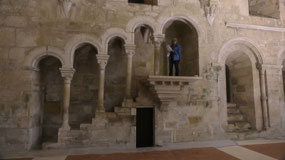
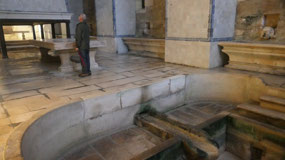
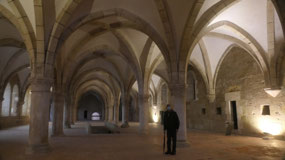
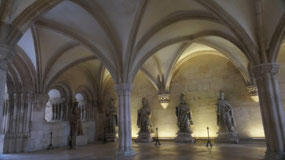
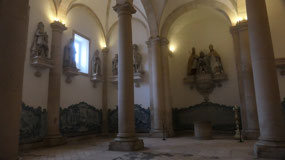
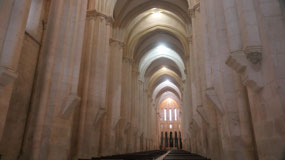
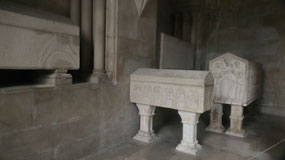



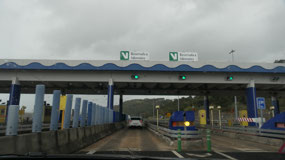
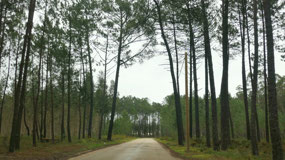
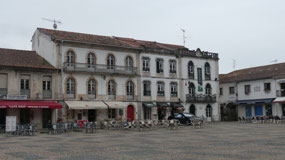

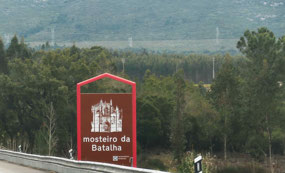
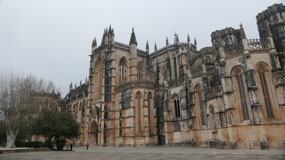
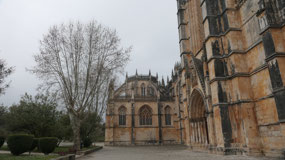
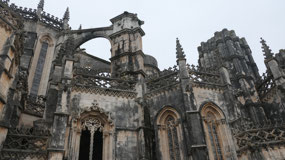
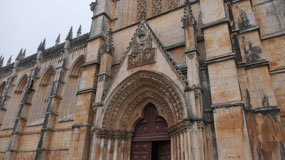
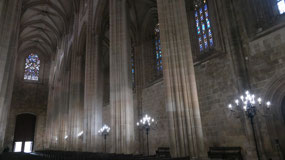
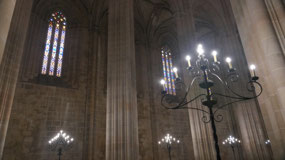
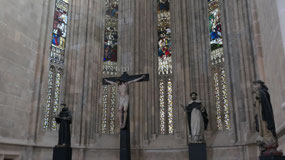
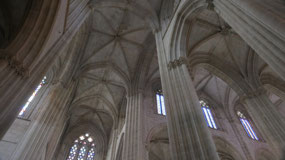
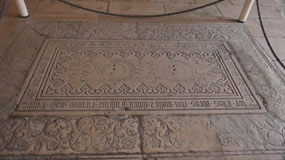
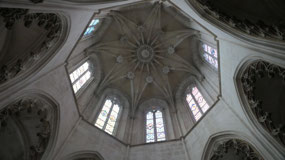
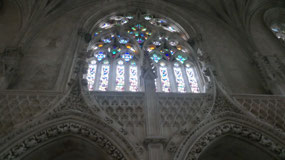
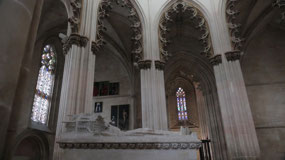

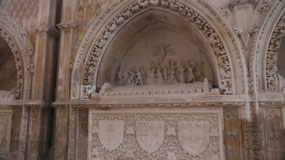
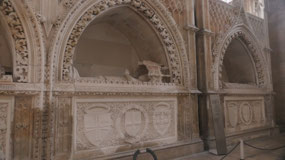
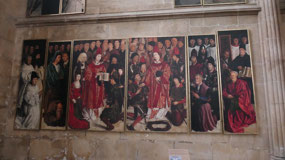
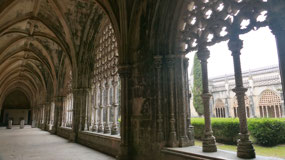
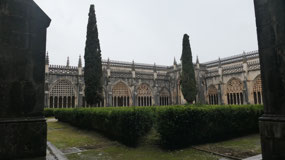
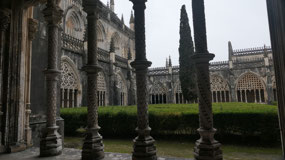
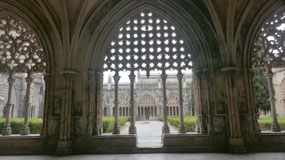
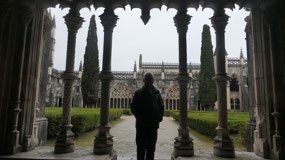
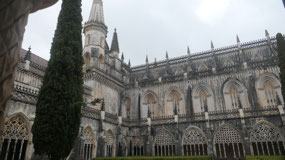
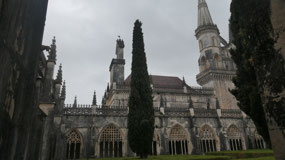
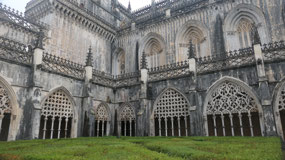
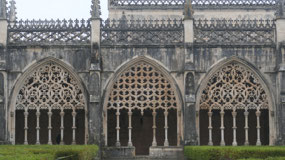
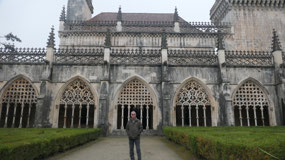
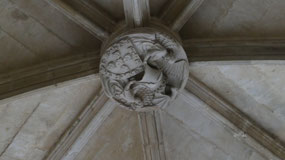
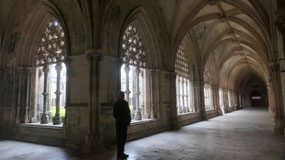
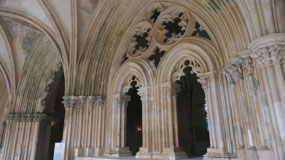
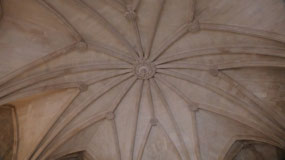

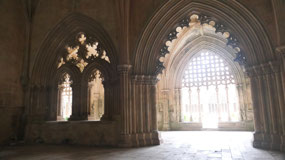
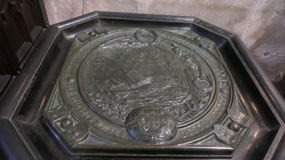
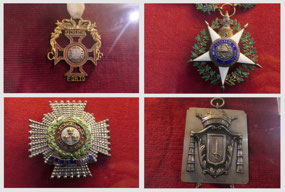
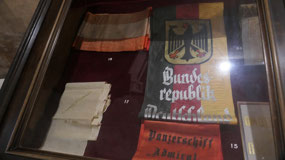
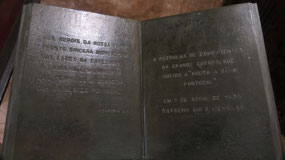
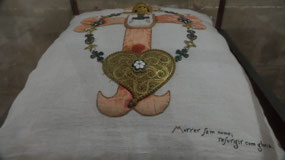
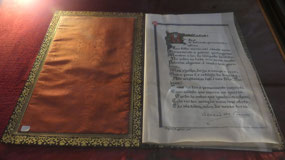
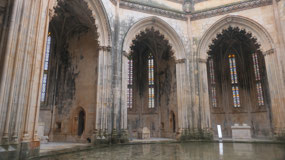
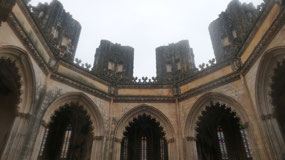
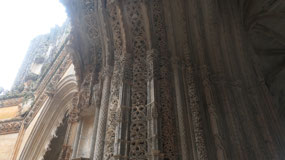

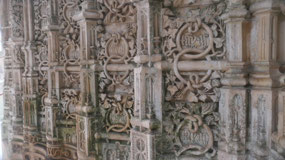
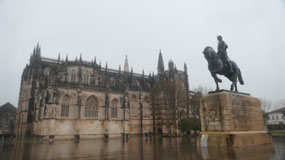
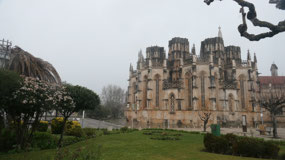
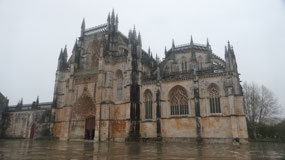
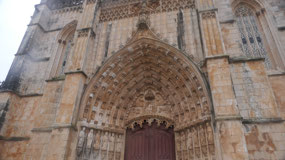
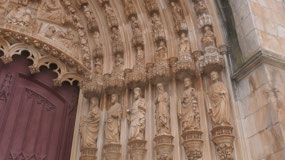
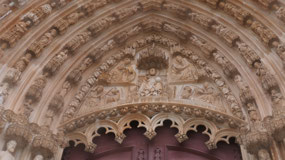
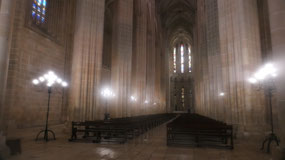
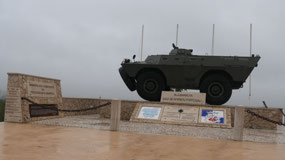
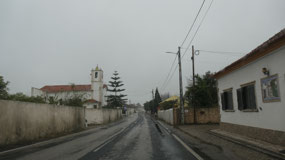

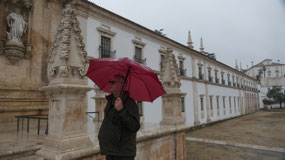
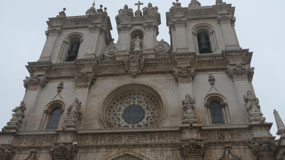
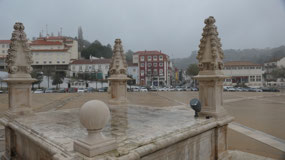

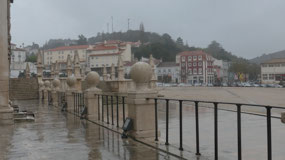
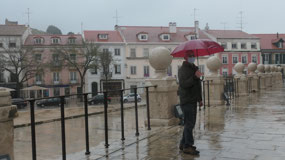
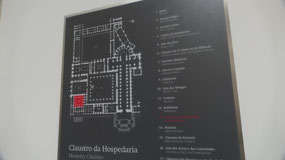
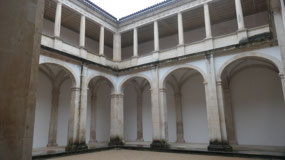
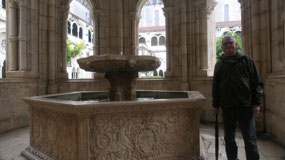
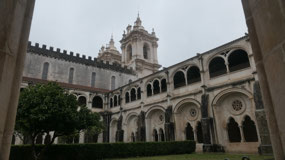

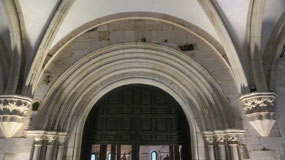
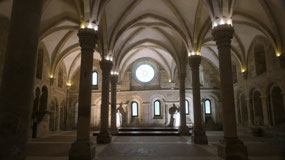
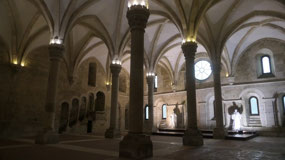

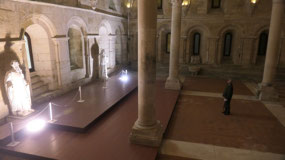

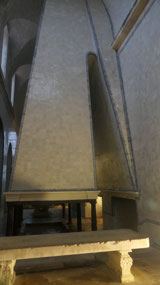
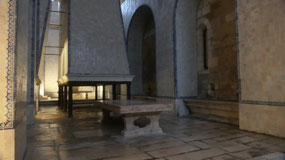
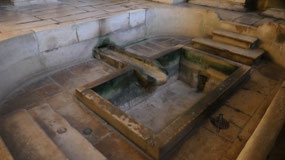
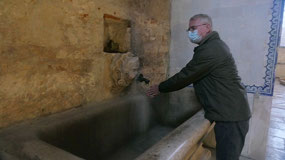
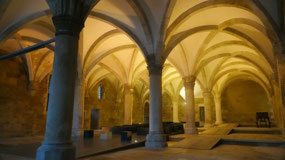

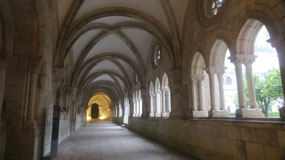
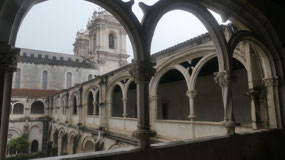

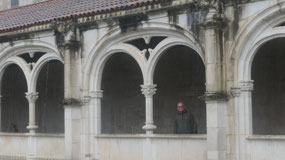
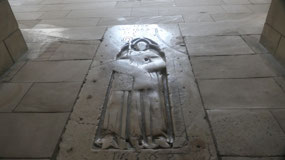
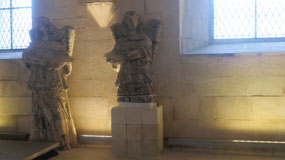
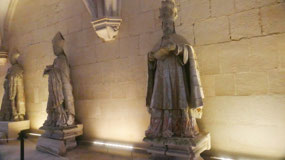
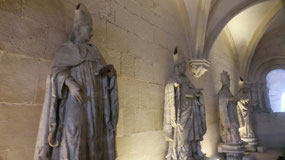
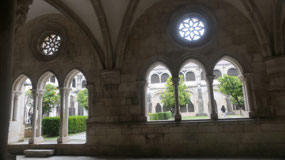
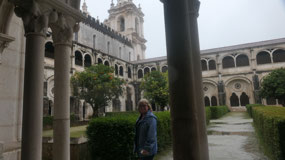
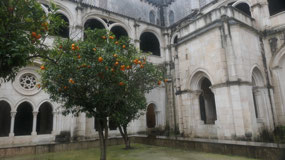
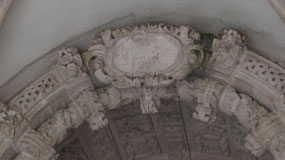
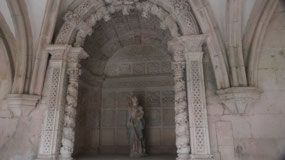
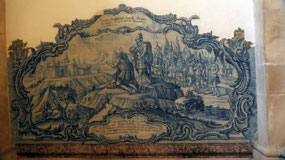
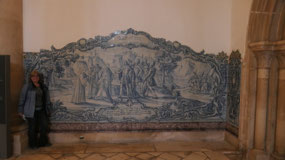
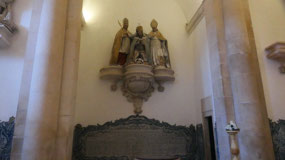
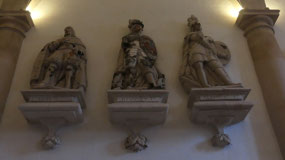
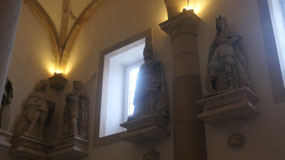
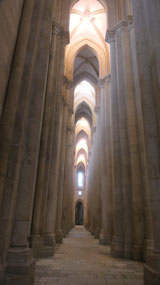
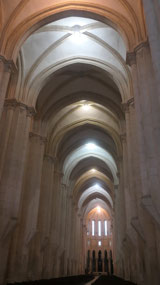
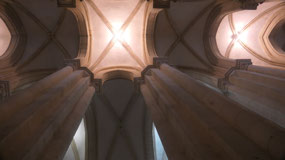
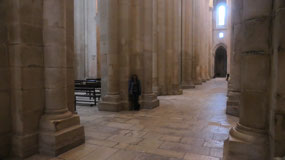
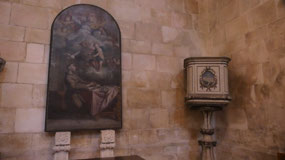
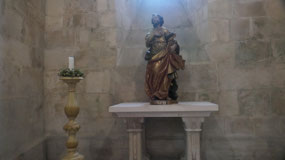
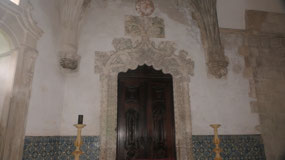

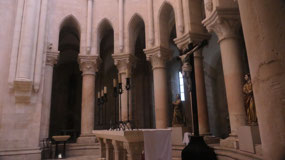
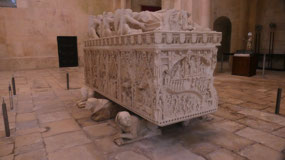
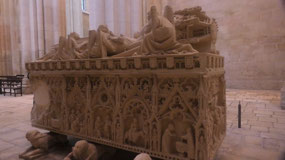
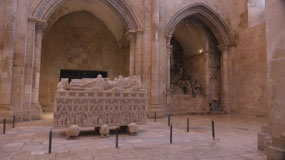

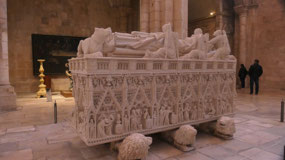
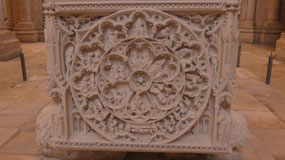
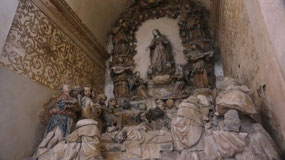
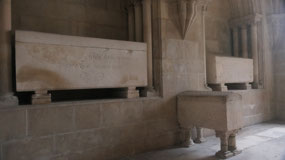
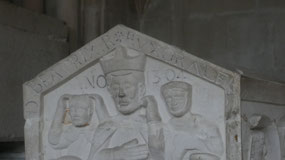
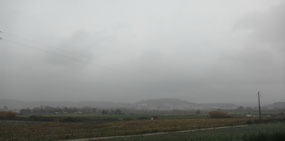
2025-05-22